If you’re ready to get serious about your drumming, you need a practice pad. Practice pads for drummers allow them to perfect their playing without bothering the entire neighborhood. And although the top pick is the Vic Firth Heavy Hitter, you should consider your needs first. However, the Heavy Hitter is an all-around pad that will teach you how to control your sticks without breaking the bank.
To create this list of the top practice pads for drummers, it was necessary to start from the beginning. For practice pads, putting sticks to the surface of more than two dozen different pads helped rate them to create this list. A look through several reviews provide insights from the average drum user, too.
Keep reading for an in-depth look on the best practice pads for drummers you can find on the market today. You’ll learn how to analyze and rate them, so you can decide what your favorite is. Find out about some alternatives for specialty drumming, as well as how to make your own practice pad.
How to Make Your Own Practice Pad (DIY)
You can make an effective, quiet practice pad easily. Do you use a mousepad? The rubber in a mousepad can make decent practice pads for drummers. They are easy to find and are often even free or quite inexpensive. Just put your mousepad on anything hard, and you have a responsive drumming surface.
But, there are some things you need to know. A rubber mousepad doesn’t completely protect the surface, so don’t put it on a high-quality table or another surface you don’t want to damage. And it doesn’t have to be mousepad. You can find similarly responsive rubber in many hardware stores. The mousepad is just an easy standard for comparison.
The mousepad solution has a much shorter lifespan than industrial practice pads. You get what you pay for in this case, but there are a few unique advantages to the DIY approach. The best thing is, you can fully customize your pad. If you want to get creative, you can cut a block of wood – the harder the better – and glue your rubber surface to it.
If you don’t have glue, use staples which come with an interesting dynamic. The staples create dead spots in the pad. While this seems like an obvious problem, strategic dead spots can be excellent for training newer drummers to aim more consistently.
Ultimately, the sky is the limit with DIY solutions, and whether you invest in a top-notch pad or not, it helps to experiment. Start by identifying the qualities that are most important to you. Keep them in mind for future solutions to training problems as you progress.
Practice pads for drummers solve a lot of problems, from transporting to keeping the peace. However, you don’t have to break the bank to buy or make one. If you want to start practicing, grab a mousepad and get started now.
My Top Pick: The Vic Firth Heavy Hitter
You won’t find better responsiveness, and this is a pad that can take abuse like no other. With a simple design, this pad works for a wide range of styles. Virtually any drummer can master the full scope of their technique with this tool.
The top pick on this list of practice pads for drummers is the Vic Firth Heavy Hitter Stock Pad. This is a rubber pad with a 12-inch diameter. They also offer an alternative model, the Slim pad, but most drummers prefer the Stock. It is thicker than its companion model and it has a more muted sound. The Heavy Hitter scores top marks in all categories.
You won’t find better responsiveness. This is a pad that can take abuse like no other, too. While the price range is affordable, consider it an investment, because it won’t wear out after many long hours of practice. The Heavy Hitter does suffer a little in the utility department. Its size enables it to fit in drum stands, but otherwise, it utilizes a simple design that is short on bonus features.

Credit: Vic Firth Company
Ultimately, that is part of the appeal, because there are no bells or whistles threatening to break or distract from a pristine practice session. In all, this is a pad that works for a wide range of styles. In fact, virtually any drummer can master the full scope of their technique with this tool.
Runner Up: Remo Practice Pad
Has a realistic rim that enables you to practice rim shots and other techniques.
Remo has a great series for both beginning and advanced drummers. They offer 6-inch, 8-inch, and 10-inch models, and you can even fully customize pads. They are of a similar rubber type to the Heavy Hitter. And in terms of responsiveness and sound, the two pads are equal.
The Remo exceeds the Heavy Hitter in utility, mostly because it has a realistic rim that enables you to practice rim shots and other techniques. These pads are phenomenal, so you won’t regret your purchase.
Second Runner Up: Evans RealFeel
Come in a few sizes, but they all have a responsiveness that is the closest I’ve found to a drum set snare.
Evans makes their RealFeel pads, and this series is commonly the first introduction to rubber pads for beginners. When it comes to all-around drumming, the RealFeel series is slightly edged out by the previous two options. But for a niche, this is the best pad on the market for replicating the feel of drum set snare.

Credit: Amazon.com
The RealFeel pads come in a few sizes, but they all have responsiveness that is the closest to a drum set snare. If trap set is your preference, this is the pad for you. The good news is, it’s in an affordable price range, too.
If drum set is your primary goal, but you still want to explore other avenues of percussion, this is still a great practice pad for drummers. It is versatile, and only two models have beat it, so you can go this route without remorse.
Qualities to Look for in a Drum Practice Pad
When it comes to comparing practice pads for drummers, there are distinct qualities that matter most to anyone who spends long hours at practice. In order of importance, they are responsiveness, longevity, size, sound and utility. Here’s what you want to get from each of these factors.
Reasons Responsiveness Comes First
Practice pads exist for one, singular purpose, to train technique. You want a pad that responds as authentically to your strokes as possible. A dead pad won’t let you properly practice by controlling the bounce and vibration of your sticks. This will teach bad drumming habits faster than you can imagine.
Conversely, if you practice on a surface that springs more forcefully than the drums you play, you’ll train your muscles improperly. Remember, different pads are better for different kinds of drummers. Still, there are universal qualities. So if you have to err on one side or the other, too springy is better than not springy enough.
Longevity is Paramount
Here’s an old quote: “If you must break your instrument to make music, then the instrument must be broken.” This adage shouldn’t prevent you from seeking equipment that can withstand some punishment. In general, practice pads take a pounding far worse than any drum.
Practice strokes are exaggerated and powerful, and they are relentless. In fact, if you get a pad without the intention of abusing it, then you don’t need it. So the longevity of a pad is slightly less important than its responsiveness. Sure, it needs to function well, but it also needs to last.
One Size Doesn’t Fit All
Size is important, but there is not a “one fits all” solution for practice pads. Larger pads are excellent for giving you more room to practice, but some people need the portability of smaller pads. Most people use 12-inch practice pads for drummers. Although that is the optimal size, it’s only because you have to start somewhere.
At 12 inches, pads are the size of many drums. In fact, snare drums are typically 14 inches. So they give you enough real estate to move the sticks around. Practice pads are lightweight and can fit conveniently into most travel bags. Ultimately, you want to go with the size that suits you best, but a 12-inch pad is a best for beginners.
Practice Pad Sound: Does It Matter?
Most musicians believe in the philosophy that sound quality matters most in music. But that philosophy doesn’t apply to practice pads. It doesn’t matter what timbre comes out of the pad. It only matters that you can hear how your technique affects that sound. When most drummers analyze the sound of their practice pad, they focus on how loud it is.
One of the primary reasons to use practice pads over drums is because practicing your strokes with a full range of motion is too loud. There are many times when you need to practice, but society will not tolerate the sheer volume of drum noise.
That’s why they invented practice pads for drummers, so the sound on a pad could be excellent, as long as it is relatively quiet. How a pad resonates or can respond to technique is the most important. But when it comes to sound, it is the volume, not the sound quality that is the primary issue.
Utility Equates to Perfect Practice
The last metric by which you should measure practice pads for drummers is utility. Although you can throw a pad on the floor and go to town, that isn’t good practice. That’s how you nervously go over a challenging section while you’re waiting.
Effective practice mirrors performances, so you want a pad that can fit snuggly into a drum stand. And a 12-inch pad will do just that. In general, the utility of a pad depends on how easily and effectively you can treat it like an actual drum.
Top Types of Practice Pads for Drummers
For the most part, drum pads come in two types: rubber and headed pads. While the rubber type originally came without rims, they’ve come a long way over the years. The primary difference between the two is that headed pads have tension lugs or screws that mirror those of an actual drum. They also use synthetic surfaces that stretch over a surface.
Both types of pads are efficient for practice, but the rubber types work best for the following reasons:
- The responsiveness of rubber is sharper, making for better practice.
- Rubber lasts longer and doesn’t require upkeep.
- Headed pads lose tension over time, and eventually tightening the “lugs” stops working.
- Rubber pads, on average, are much quieter. They produce a muted sound that’s easier on the ears during a long practice session.

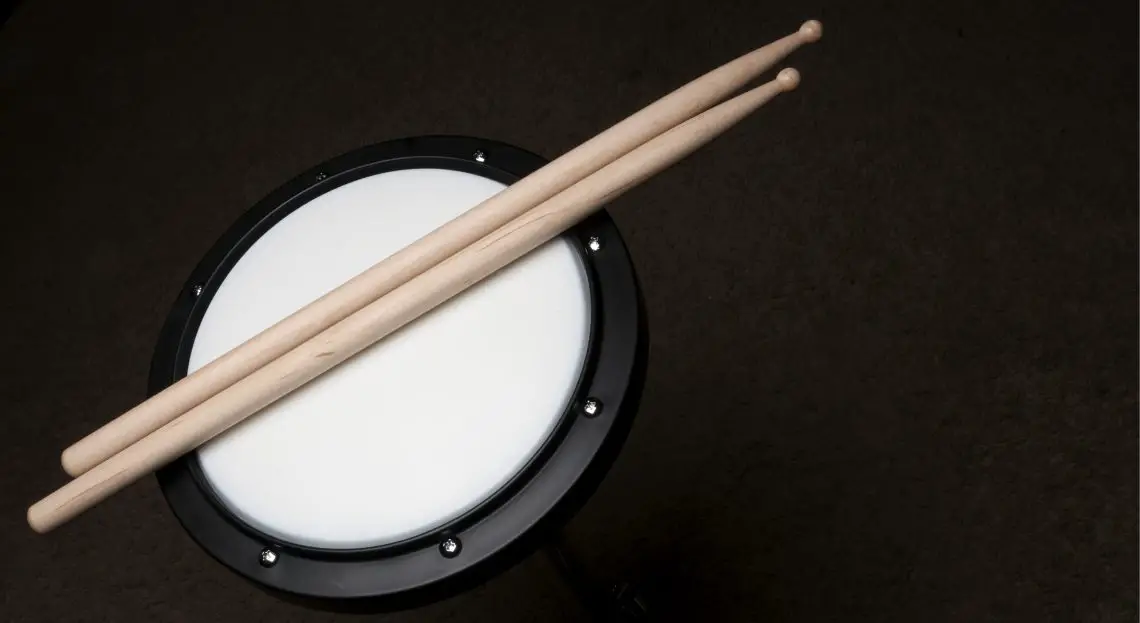



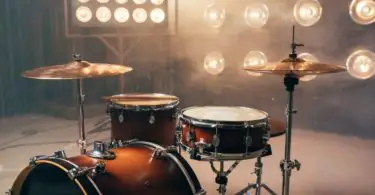


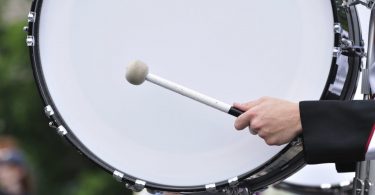
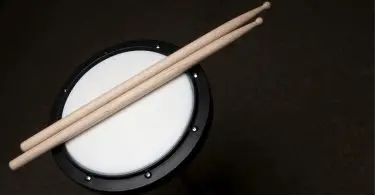
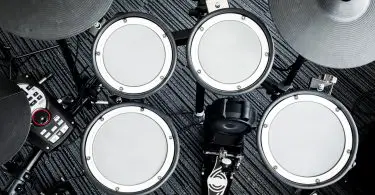
Start the discussion at talk.hearthemusicplay.com